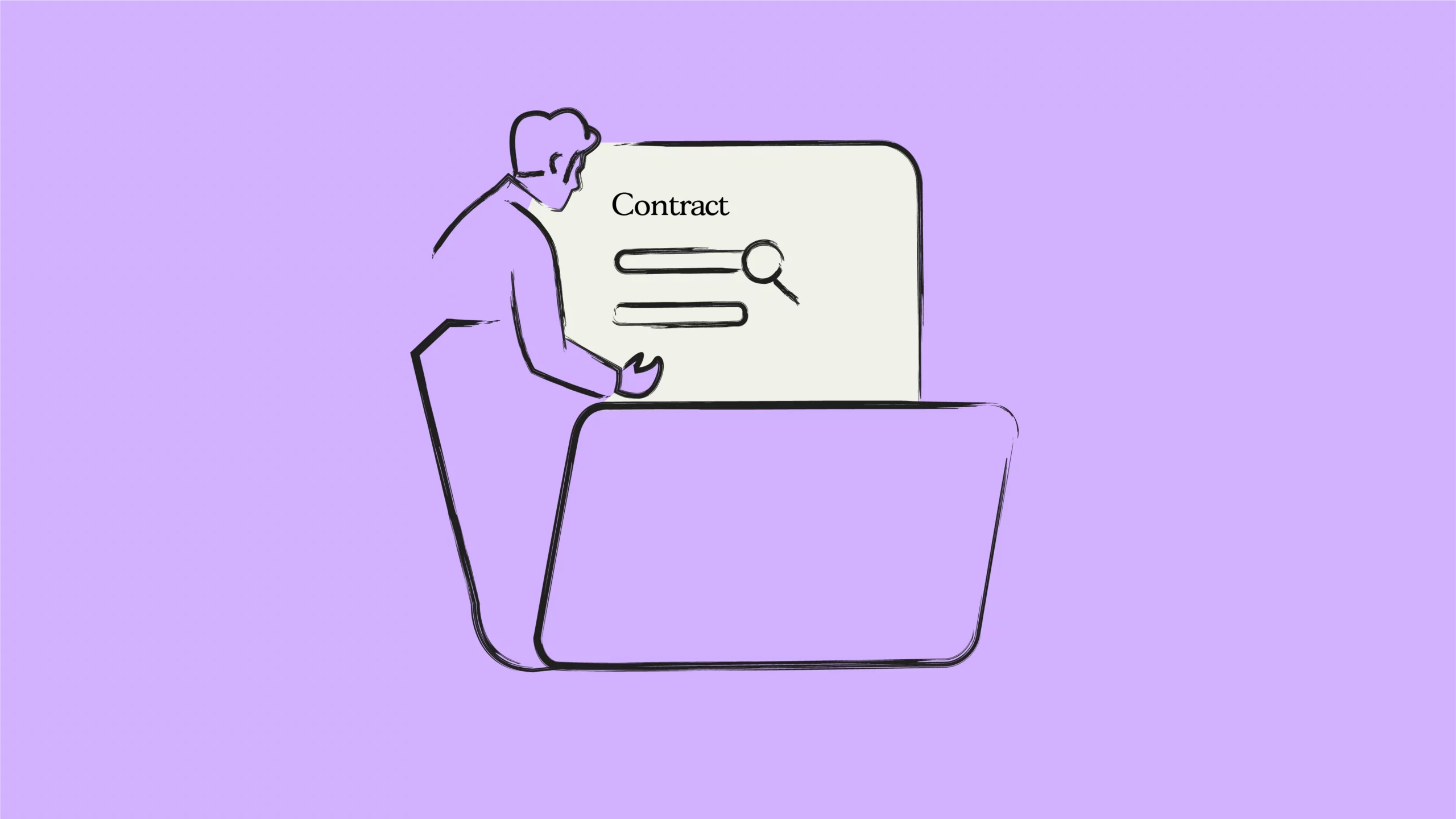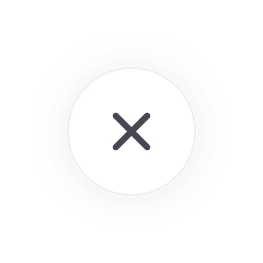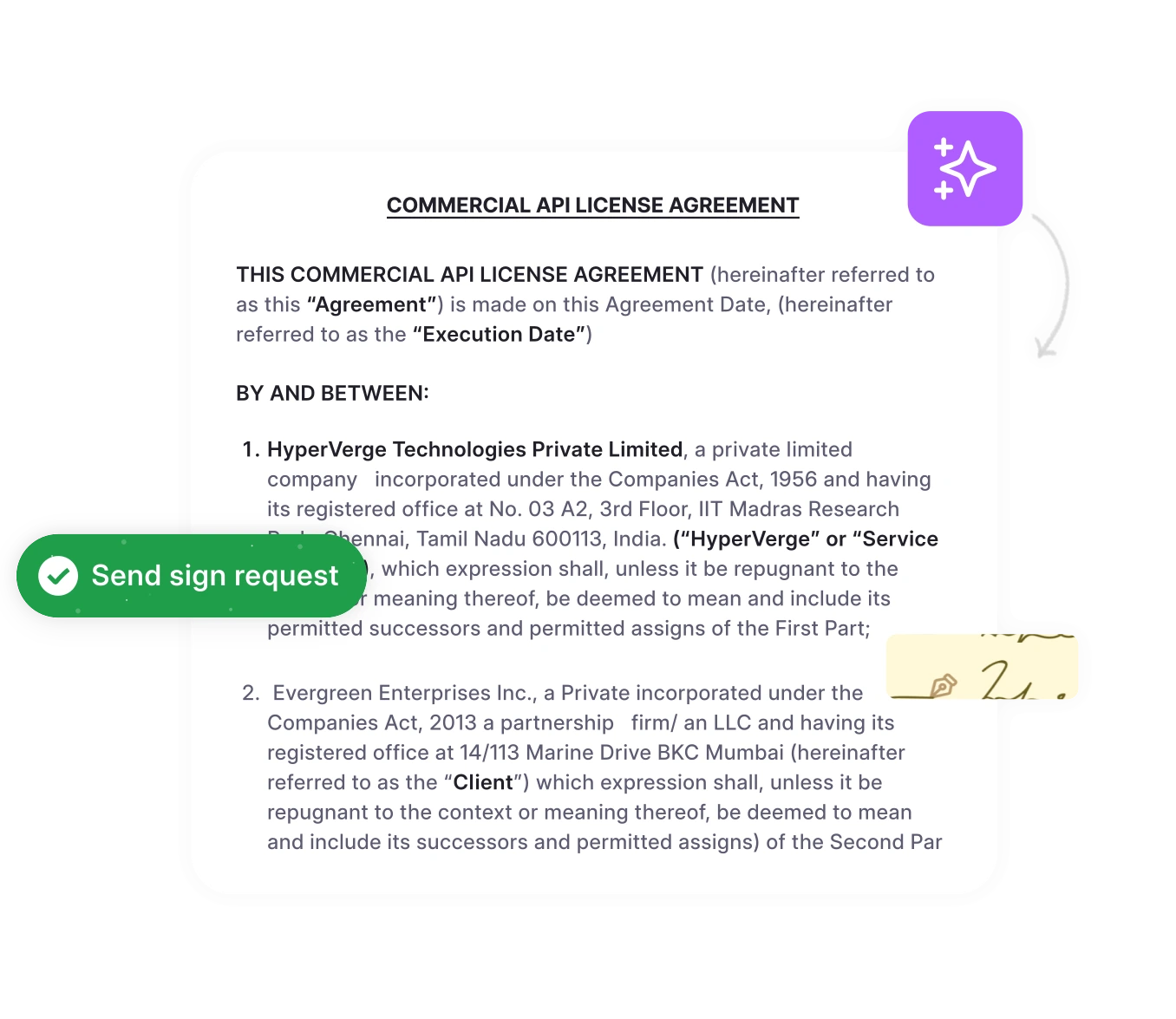Once your contracts are signed and executed, they require continuous monitoring to ensure compliance, obligation fulfillment, and compatibility with business objectives. Contract performance tracking helps fulfill these goals and improves contract visibility.
However, how does contract tracking work, and how can contracts be tracked?
These are the most common questions among contract managers, sales teams, compliance officers, and legal teams looking to track agreements. While manual contract tracking is easy for low contract volumes, it is not the right choice for high contract volumes.
This blog walks you through the fundamentals of tracking contracts effectively. Get complete information on the fundamentals, importance, process, and tips for effectively tracking your agreements. Let’s get started.
What is contract tracking?
Contract tracking refers to the monitoring of contractual stages—from contract requests to renewal—and measuring their performance. The measured contract lifecycle performance is compared against pre-set metrics to calculate deviations and differences.
Tracking agreements is a post-signature contract management process that helps answer questions like:
How are contracts performing post-execution?
Which contractual obligations and key dates are due?
Are there any compliance-related issues in any of the agreements?
Are there any bottlenecks in CLM stages like creation, approval review, and signature?
Usually, contract managers, legal teams, and compliance officers track agreements in an organization.
Let’s understand more about this concept through an example.
In the construction industry, contract tracking helps manage agreements with subcontractors, suppliers, and vendors by monitoring deadlines, payments, and compliance. It ensures timely project completion and reduces the risk of disputes. This improves efficiency and minimizes costly delays.
Now that the fundamentals of agreement tracking are clear, you must be wondering, “Is contract tracking important?”. The coming section answers this question.
What are the benefits of tracking contracts?
Tracking contract data is an important part of the contract lifecycle as it helps maintain compliance and business relations, and safeguards your organization from legal troubles. Here are the 6 benefits of tracking and monitoring agreements:
1. Improves legal compliance through continuous monitoring
Non-compliance with a contract’s terms is the route for legal troubles and lawsuits. Most non-compliance issues stem from a lack of contract visibility and information on legal adherence.
Tracking helps compliance officers and legal teams remain aware of the contract’s compliance requirements. From fulfilling deliverables in vendor agreements to maintaining confidentiality in NDAs, tracking helps adhere to contractual terms and dodge lawsuits.
2. Data-driven CLM insights enhance business efficiency
C-level executives and strategists often leverage contract data to drive insights, identify bottlenecks, and elevate business opportunities. However, without a holistic view of all agreements, it is challenging to make fail-proof decisions.
Track helps turn complex contracts into useful insights. With a holistic view readily available, identifying and eliminating bottlenecks becomes easy for business teams.
3. Monitoring helps stay ahead of upcoming contract renewal dates
Renewing contracts can often be overlooked. By tracking contract data and monitoring renewal dates, businesses can stay ahead of this process and prevent costly lapses.
Continuous tracking ensures businesses are reminded of critical renewal dates well in advance, enabling proactive management.
4. Monitoring helps stay aware of contractual obligations
As per a survey conducted by EY Law, 78% of organizations don’t systematically track their contractual obligations. Missed obligations can lead to legal repercussions and even hamper business relations with counterparties.
Tracking helps stay on top of contractual obligations. Sales and procurement teams can improve contract visibility and ensure obligation fulfillment by routinely tracking and monitoring agreements. This helps ensure that no upcoming obligations and deliveries go unnoticed.
5. Mitigates business and operational risks
Business objectives, goals, and policies change over time. And contracts are updated periodically to reflect them. Certain contracts may contain clauses and terms that can become a business threat, like those with legal loopholes and outdated agreements.
With continuous agreement tracking, organizations can identify potential contractual risks and negotiate terms or terminate unfavorable agreements before they become a business threat.
6. Contract data helps realize better business opportunities
Contract owners and business teams can greatly benefit from contractual data. This data is the key to gaining insights into contract management performance.
Data derived from tracking contracts helps better negotiate contracts in the future. Organizations extract contract data points to identify opportunities to recapture revenue leaks.
Auto-track Contracts With AI
Use HyperStart to automate your contract tracking process and never miss another important contractual obligation again.
These are the benefits of tracking contracts. Now that you know why it is important to track agreements, let’s discuss what exactly needs to be tracked within a contract.
5 Key KPIs to track in contracts
There are various contract management KPIs that you can track to measure CLM success, compliance, and obligation fulfillment. Here we highlight 5 of the most important KPIs to consider for the effective tracking of your legal agreements.
| KPIs | Why They Matter |
| Total CLM duration | What is the duration of time between contract request generation and signature? The longer the CLM time, the more chances of bottlenecks in your CLM processes. |
| Upcoming renewals | How many contracts are due for renewal this month/quarter? Smart contract management software like HyperStart CLM helps set auto-reminders for renewals. |
| Key obligations and deliverables | What payments and deliverables are due/upcoming? Knowing the answer to this question helps prepare for deliverables, predict cash flow, and avoid fines and penalties for missing obligation dates. |
| Approved language usage | Since most non-compliance issues stem from a lack of approved contract language usage, tracking this contractual metric is essential for ensuring compliance and minimizing the risk of legal loopholes in agreements. |
| Legacy system integrations | Knowing this helps ensure that there are no bottlenecks in the contract management process. This also reduces friction between legal and sales, HR, and procurement teams for contract-related tasks.Spend 80% Less Time Managing Contracts |
Switch to HyperStart CLM for end-to-end contract lifecycle management. Automate contract creation, review, approval, signing, and tracking.
These are a few key metrics to track in contracts. However, how do business teams track these metrics? Let’s find out.
How to track contracts effectively in 4 steps
Knowing how to track contracts helps ensure optimal utilization of contractual data points. Here’s the complete process of tracking contracts:
Step 1: Identify the metrics that you want to track. The first step to successful tracking is to identify the right CLM metrics. Tracking the right metrics helps derive valuable data.
Step 2: Set performance benchmarks and standards: After you have selected the KPIs for contract tracking, it is time to set standards and benchmarks against which you will measure the CLM performance.
Step 3: Define stakeholders and responsibilities: Identify who is responsible for which part of the contractual process. Doing so helps differentiate roles and responsibilities, thus promoting accountability.
Step 4: Start tracking through a contract tracking system: The last step is to implement a contract tracking system like HyperStart CLM and start monitoring your agreements. This software automatically tracks contracts throughout and even reports on them.
This is the start-to-end process of tracking agreements using contract automation platforms. However, for effective tracking, it is important to choose the right contract management system with the right features. The coming section talks about these features.
Features to look for in a contract lifecycle tracking software
Here are the key contract tracking software features to look for when choosing a solution:
| Feature | How It Works |
| Central Contract Repository | A secure contract repository helps store all contracts in a centralized location. With all contracts in one place, internal resources can locate and retrieve contracts easily. |
| Contract Analytics Dashboard | A real-time reporting dashboard helps get the latest insights into the contract’s status and performance. From CLM duration to bottlenecks, this dashboard has all the insights. |
| Audit Trails | Contract tracking includes tracing all revisions, negotiations, and changes in an agreement over time. Audit trails help trace back changes in agreements and maintain accountability. |
| Renewal Reminders | Automated calendar reminders for renewals help key stakeholders prepare for contract renewals. This feature helps ensure that you never miss a renewal again. |
| Obligation Reminders | AI tools help automated reminders for upcoming obligations, from your and your counterparty’s end—No more missed deadlines from lack of obligation knowledge. |
| Automated Workflows | No-code approval workflows ensure efficient, traceable, and frictionless contractual processes. Clearly defined roles make tracking and division of tasks easier. |
| External App Integrations | Connectivity with CRMs, HRMs, ERPs, and other business tools helps streamline contract tracking. Multiple business teams can access and leverage contract tracking data. |
The best contract tracking software like HyperStart CLM offers all these features to help implement robust tracking mechanisms in your CLM process.
HyperStart has simplified tracking crucial clauses like liability and indemnity. Multiple teams benefit from having all data centralized, and we receive timely reminders for contract renewals.

Mayuri Jaltare
Company Secretary at Qapita
Auto-track key contract dates and metrics with HyperStart CLM
High contract volumes and excessive data make tracking difficult. Don’t let this hinder your ability to leverage contract insights—switch to HyperStart CLM.
HyperStart is your one-stop contract tracking platform powered by AI. Automate tracking for key obligations, renewal dates, and compliance, leaving nothing to chance.
Still not convinced? Book a demo today to explore how HyperStart CLM can accelerate contract lifecycle management and tracking.












